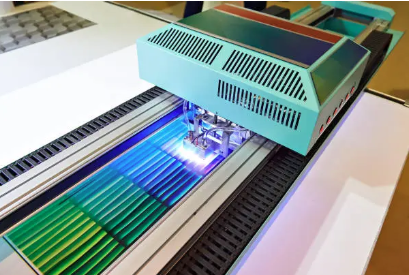
In medical manufacturing, small errors are not just minor flaws. They carry real risk. A micron too much, an edge too rough, or a subtle finish flaw can lead to failure in a surgical tool or implant. To build safe and effective devices, manufacturers must embrace a mindset that leaves no room for micro-defects.
Many of the flaws that compromise devices are hidden beneath the surface. Burrs left after machining may catch on delicate tissue. Tiny cuts or microcracks can expand under stress, compromising strength over time. Inconsistent thickness can change how a component performs, while uneven surface finishes can disrupt coatings or bonding. These imperfections are often invisible to the naked eye and can slip past basic checks unless a more rigorous system is in place.
Traditional manufacturing processes struggle with such demands. Manual handling, conventional cutting, and standard machining methods often introduce small variations. Operator influence, tool wear, and environmental factors all contribute to inconsistencies. Even when parts appear to meet specifications, microscopic deviations may remain. If inspection is infrequent or incomplete, these flaws can move downstream and in some cases, find their way into devices that are placed in patients.
To minimize this risk, forward-thinking manufacturers adopt a combination of advanced fabrication methods, multi-layered inspection, and early collaboration. Precision-first fabrication techniques such as laser cutting and micromachining reduce variation and create consistent results. Unlike manual or traditional methods, these approaches deliver burr-free surfaces and tighter tolerances that reduce the need for secondary adjustments.
Inspection practices have also grown more sophisticated. Rather than relying only on end-of-line checks, many manufacturers incorporate in-process monitoring and feedback loops. Automated vision systems, surface profiling, and dimensional verification confirm whether parts meet their targets. When inspections are integrated into the process itself, they allow for adjustments before small problems grow into significant defects.
Collaboration between design and manufacturing teams plays a critical role as well. By addressing tolerance sensitivity and process limitations at the design stage, companies reduce the likelihood of flaws being built into the part from the start. This type of partnership ensures that designs are achievable, robust, and fully supported by the chosen manufacturing and inspection methods.
Alongside these practices, maintaining strong calibration and traceability standards is essential. Every instrument, machine, and fixture must operate within its documented limits to prevent drift or misalignment from introducing defects. Continuous improvement is equally important. By collecting data, studying root causes, and adjusting processes, manufacturers create a culture where reducing micro-mistakes becomes second nature.
When precision fabrication, rigorous inspection, and cross-discipline collaboration are layered together, they create a defense strong enough to minimize risks that are otherwise invisible. Over time, these practices transform into a culture of reliability where safeguarding patients begins with eliminating the smallest errors.
To learn more about minimizing micro-mistakes in medical manufacturing, view the resource below from Trinity Brand Industries, suppliers of stainless steel shims.




